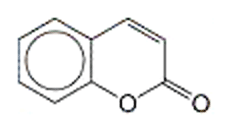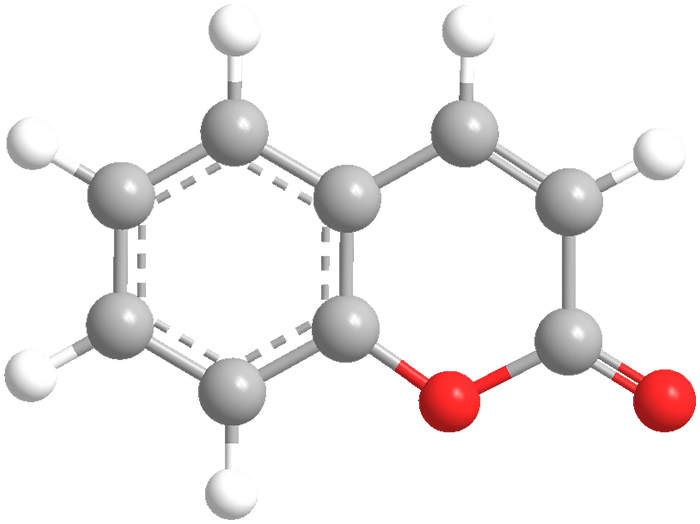

Coumarin is a benzopyrone that occurs naturally in plant-derived sources such as tonka beans, lavender oil, woodruff, and sweet clover. Its sweet scent makes it useful in perfume manufacture. It is a potent rodenticide, but it is only moderately toxic to humans. It is used to make warfarin, another rodenticide that is also a widely used anticoagulant drug (trade name Coumadin) for preventing thrombosis and embolism.
MOTW update:
February 29, 2024
Coumarin1 is a natural product found in plants such as lavender oil and sweet clover. Its uses range from perfumes to rodenticides.
Earlier this month, Margaret Sunde, Elizabeth J. New, Amandeep Kaur, and collaborators at the University of Sydney and Monash University (Melbourne, both in Australia) reported a use for coumarin in research related to Alzheimer’s and Parkinson’s diseases. They developed a fluorescent coumarin-based two-sensor array that can correctly discriminate among four different amyloids implicated in amyloid-related pathologies with 100% classification. They also applied the array to mouse models of Alzheimer’s disease and found that it could discriminate between samples from mice corresponding to early (6-month) and advanced (12-month) stages of Alzheimer’s disease.
1. CAS Reg. No. 91-64-5.

Learn more about this molecule from CAS, the most authoritative and comprehensive source for chemical information.
Molecule of the Week needs your suggestions!
If your favorite molecule is not in our archive, please send us a message. The molecule can be notable for its current or historical importance or for any quirky reason. Thank you!
Stay Ahead of the Chemistry Curve
Learn how ACS can help you stay ahead in the world of chemistry.

